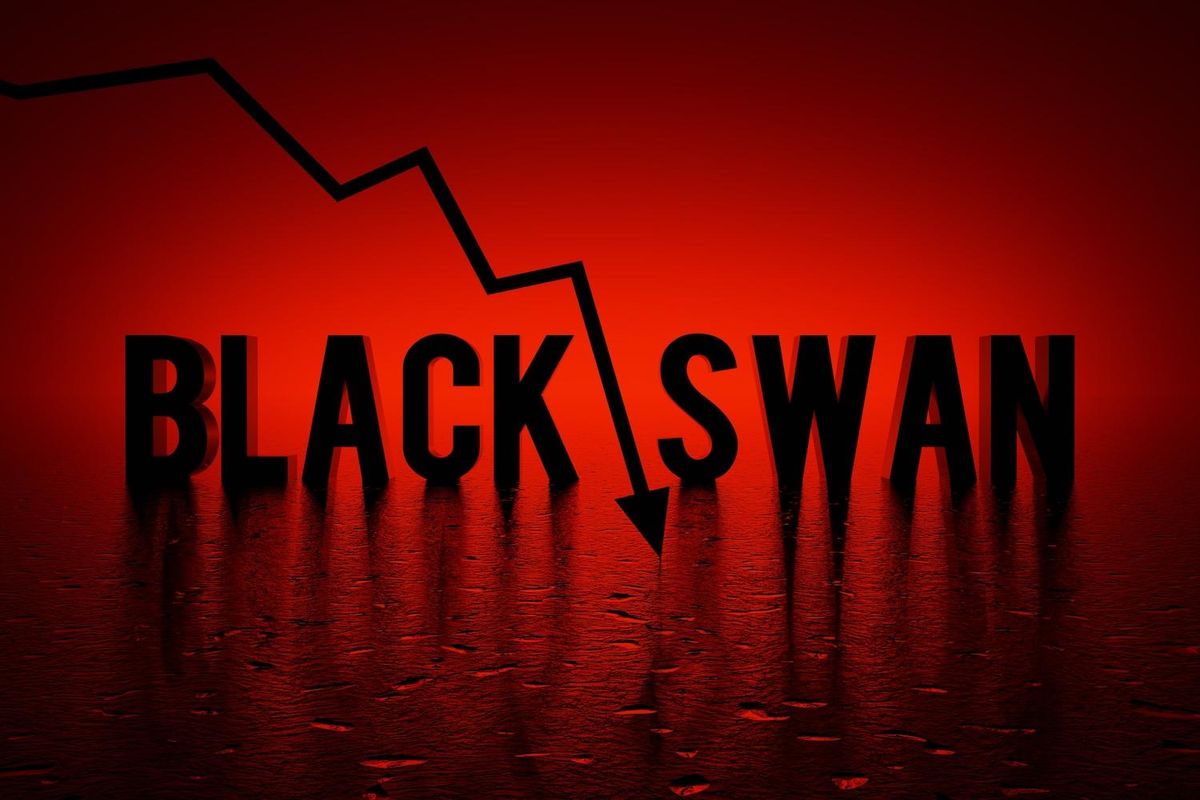Gold Boom, AI Bubble and Black Swans: Where is the Risk?
Expert panelists at the New Orleans Investment Conference are calling for a volatile 2026, warning investors of major threats like the inflating AI bubble, overstretched equity valuations and rising resource nationalism.

A mounting artificial intelligence (AI) bubble, overvalued markets and resource nationalism are among the issues experts at the 51st New Orleans Investment Conference flagged for investors heading into 2026.
With the ongoing precious metals bull market sending gold and silver prices to fresh all-time highs this year, the wide array of panelists and speakers cautioned investors to be prepared for anything.
During the Mining Share panel, moderator Rick Rule, proprietor of Rule Investment Media, asked participants which black swan is most likely on the horizon, acknowledging that these events are inherently impossible to predict.
Nick Hodge, publisher at Digest Publishing, said disproportionate market growth is keeping him up at night.
“The overvaluation of the S&P 500 (INDEXSP:.INX) and the tech stocks could lead to some sort of stock crash that takes down the valuations of all the equities, including the precious and industrial metals. I think it's long overdue,” he said.
Hodge also noted that the US has largely avoided a recession in recent years, and that economic growth is “okay," but warned that equity valuations, particularly in tech, quantum computing and robotics, have run ahead of fundamentals.
Jordan Roy-Byrne, editor and publisher of the Daily Gold, went a different route, saying gold and silver prices could go vertical "sooner than people think," and suggested that investors aren't ready for that to happen.
Roy-Byrne argued that fears rooted in the 2008 financial crisis still distort market thinking, even though bonds are now in a secular bear market and stock crashes tend to look very different.
If the S&P enters a downturn in the next couple of years, he said the setup could resemble the mid-1970s, when equities slumped, but precious metals soared — a scenario many investors aren’t prepared for.
Strategic investor Jeff Phillips sided with Hodge, saying that the ripple effects of a tech-related bubble are his paramount concern at the moment. He noted that the resource sector’s bull markets are often sparked by broader financial corrections, because investors tend to retreat to hard assets when liquidity dries up.
Resource markets are thinly traded, Phillips explained, so momentum can shift quickly.
After three major resource bull cycles in his 30 year career, he’s seen the same pattern repeat: when speculative themes fade — whether that be the internet in the early 2000s or today’s AI boom — investors eventually recognize that most of the companies in these sectors won’t deliver, and capital flows back to tangible assets.
“So what keeps me up at night is not necessarily the resource sector, but a liquidity event that causes people to have to sell things,” Phillips said. “But I don't know what the black swan is, because that's what a black swan is.”
Taking a different approach, Jennifer Shaigec, principal at Sandpiper Trading, underscored growing tensions with China around trade, as well as supply chain imbalances that are materializing in the resource sector.
“I'm going to go with something very dark — nationalization of mines,” she said.
“I think we're headed for a conflict with China. We're seeing this huge push to secure domestic supply chains, and the wartime controls that were from World War I and II (are still in place). Seeing the government starting to take these bigger stakes in some of these projects is a little bit scary for me," Shaigec explained.
For Brien Lundin, conference host and editor of Gold Newsletter, all the hypotheses have merit. He explained that a major liquidity crisis is almost unavoidable, but said it would also create one of the biggest opportunities in years.
Since 2008, markets of all kinds have become dependent on rapid central bank intervention, he noted.
So while a shock could deliver a brief period of real pain, Lundin expects policymakers to respond quickly with a surge of liquidity, just as they did after the financial crisis and during COVID-19.
That kind of rescue typically sends gold, commodities and other risk assets sharply higher.
"What we don't know is what the black swan is, where is it going to come from? It usually comes out of left field in some area nobody's really predicted,” said Lundin.
AI euphoria may be outpacing reality
At the Booms, Bubbles and Busts panel, fear that the AI bubble is reaching critical mass was the prominent theme.
Moderator Albert Lu, founder and president of Luma Financial, started the discussion by polling the panelists about whether the AI market is in a bubble right now.
“Yeah, we're in a bubble. But in the 1990s we were in a bubble in the internet. So the question is, what stage of the bubble are we at?” responded economist and professor Peter St. Onge.
He recalled buying Yahoo in 1996 — when friends thought he was reckless — only to watch it soar. Today’s tech boom, he argued, is “without a doubt” a bubble, potentially 10 times bigger than the dot-com era.
In his view, the cycle will eventually break, but before a steep correction, he suggested there may still be room for tech markets to multiply, perhaps doubling or even surging eightfold, before an inevitable 75 percent wipeout.
Jim Iuorio, managing director of TJM Institutional Services, cautioned that while “it’s not that valuable … to say we’re in a bubble,” he believes markets are somewhere in bubble territory — but trying to pinpoint the exact stage is “foolish."
He warned that many high-flying tech names could face a 30 percent correction within 18 to 24 months.
What's convinced him most about this has been the frenzy around OpenAI-related announcements.
“Anytime they mentioned any partnership with anyone — just the mania that happened with those stocks — to me that means we're in some sort of odd realm that I'm not comfortable with," he said.
Still, he isn’t exiting yet — Iuorio said he's keeping his positions hedged and flexible while acknowledging “there is a very distinct possibility that one day you're going to open up your portfolio and things will change quite a bit."
For his part, Jim Bianco, president and macro strategist at Bianco Research, said he resists using the word “bubble” because “I don't know exactly what it means." He noted that people often invoke it only when they think the cycle is ending, and aligned with St. Onge in arguing that the endpoint may not be near right now.
Bianco stressed that AI technology is “very real” and likely “more transformative than the internet," comparing the hype to late-1990s optimism about the web, which may have seemed exaggerated, but largely proved true.
Still, he cautioned that transformative technology doesn’t guarantee immediate investment success: buying into the internet boom meant enduring the dot-com crash and the long slog through the Great Recession before breaking even.
Don't forget to follow us @INN_Resource for real-time updates!
Securities Disclosure: I, Georgia Williams, hold no direct investment interest in any company mentioned in this article.






